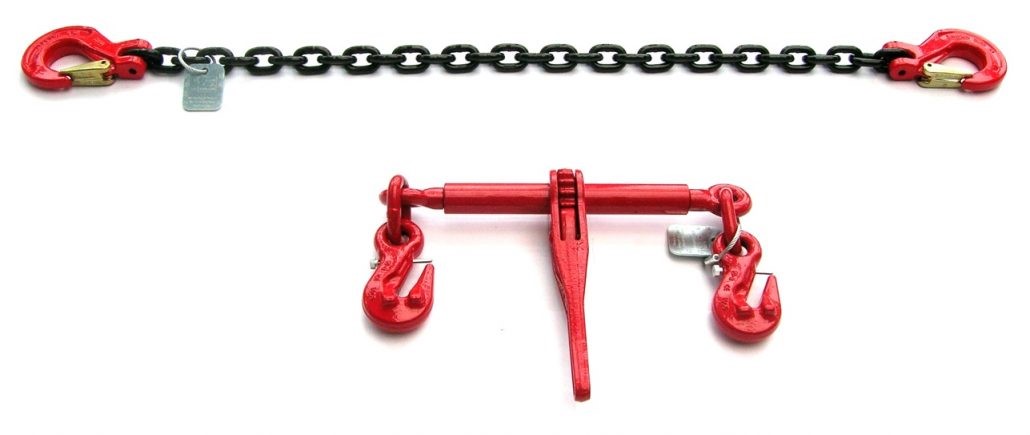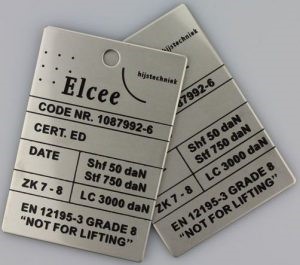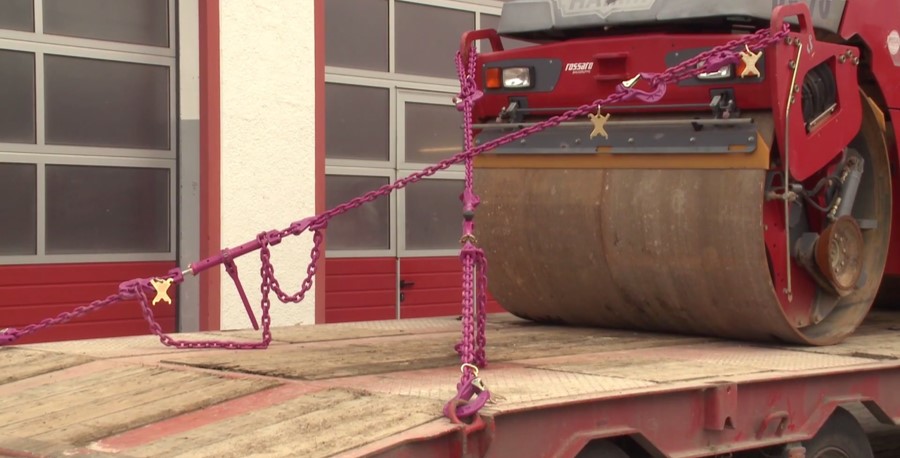In the case of very heavy loads transport, it can be well convenient to secure the cargo by lashing chains approved according to the EN 12195-3 standard, instead of web lashings approved according to EN 12195-2 standard. This is to limit the number of lashings required, since lashing chains provide a much higher securing force than web lashings.
Example of chain lashings according to EN 12195-3 standard
Usually the lashing chains are of the short link type. At the ends there are specific hooks or rings to be fixed on the vehicle, or connecting the load in case of direct lashing.
Lashing Chains are provided with a tensioning device. This can be a fixed part of the lashing chain or a separate device that is fixed along the lashing chain to be tensioned. There are different types of tensioning systems, such as a ratchet type and a turn buckle type. In order to comply with the EN 12195-3 standard, it is necessary that there are devices capable of preventing loosening during transport. This would in fact compromise the effectiveness of the fastening. The post tensioning clearance must also be limited to 150 mm, in order to avoid the possibility of load movements with consequent loss of tension due to settling or vibrations.
Example of plate according to EN 12195-3 standard
Use of chains for direct lashing
Post time: Apr-28-2022








